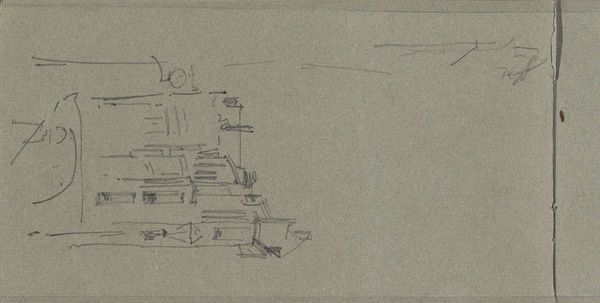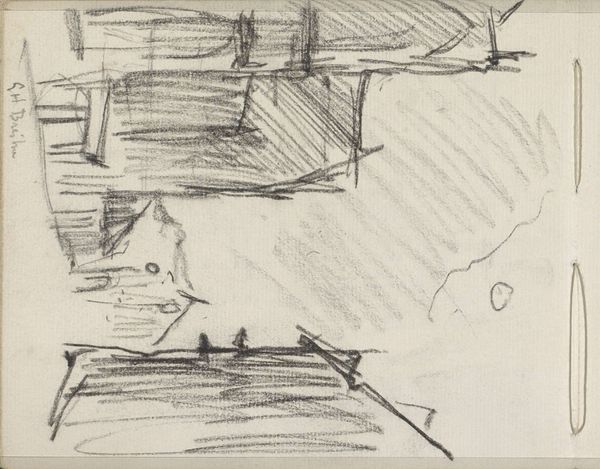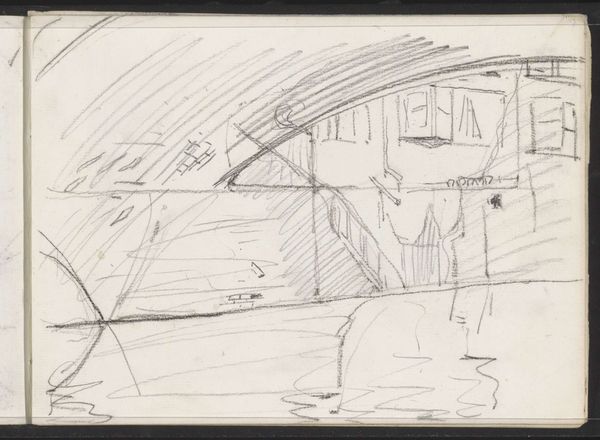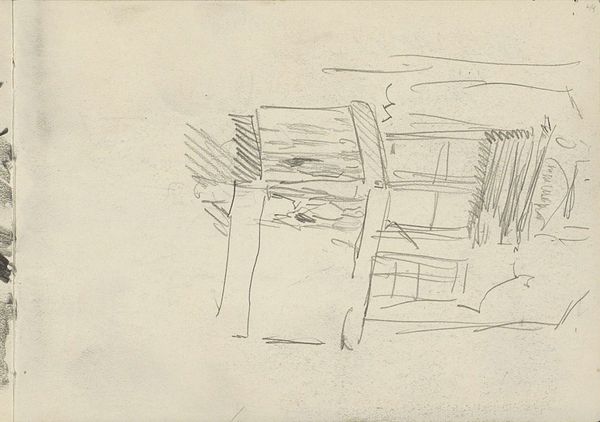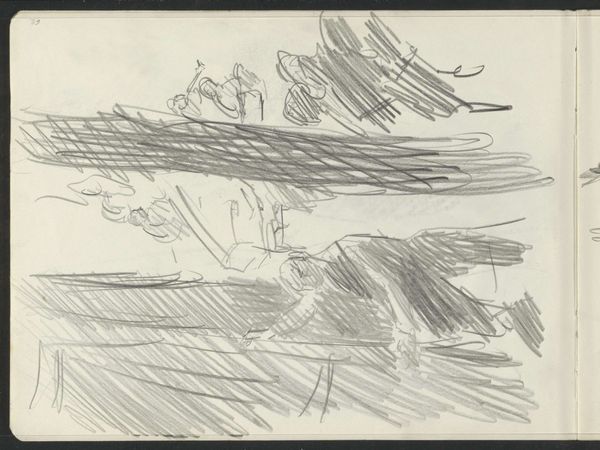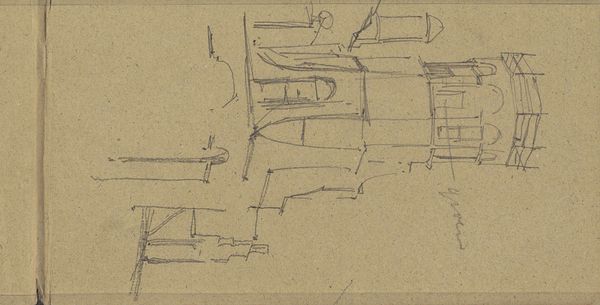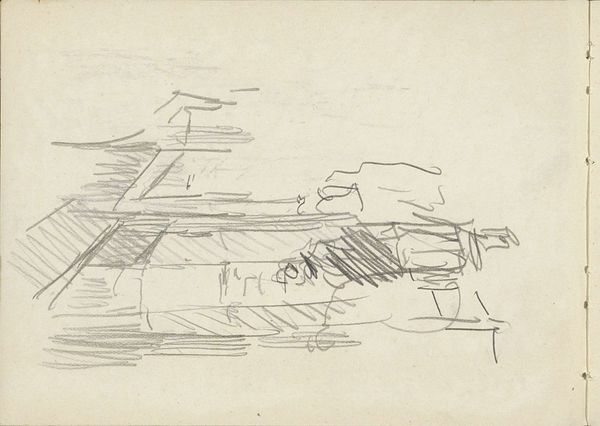
drawing, pencil, graphite
#
drawing
#
table
#
form
#
pencil
#
line
#
graphite
Dimensions: height 99 mm, width 164 mm
Copyright: Rijks Museum: Open Domain
Curator: Here we have a graphite and pencil drawing, "Salontafel," or "Coffee Table," created by Gerrit Willem Dijsselhof sometime between 1876 and 1924. Editor: It looks like a hastily sketched diagram, a bit ghostly and uncertain. The lines are fragile, almost tentative, as if the table might vanish any second. Curator: I see it as a study in form. Note how Dijsselhof uses line weight and density to define the planes of the tabletop and legs. These are the basic elements of furniture design stripped to their essence. He understood the table, as an archetype, I'd suggest. Editor: And within that archetype, there's the loaded context of 'the salon,' right? Coffee tables are such innocuous pieces, but positioned centrally within social gatherings, the dramas of class and power played out around them. Curator: Intriguing idea. In this sketch, each marking can become a potential cipher or indicator of how we engage in conversations when discussing issues around tables like these. There’s an interesting tension between its solid form and ethereal depiction, right? Editor: Exactly. While a coffee table is meant to be functional, to support conversations and interactions, the drawing reveals its inherent vulnerability – that it’s also symbolic of fleeting gatherings that we engage with. Curator: Consider how a salon functions in culture. From ancient traditions of orality to its use for radical conversations around liberation, the table emerges as an ancient emblem of continuity and the importance of engagement and thought exchange. Editor: A shared space… literally built for connection, then represented here in a medium that echoes the ephemeral nature of those interactions. You almost wonder if the table is a stand-in for something else entirely. Curator: Perhaps it reflects the delicate balance inherent in social structures, forever supported but forever changing. Dijsselhof’s work offers us to consider the essence of a very ordinary item, both aesthetically and socially. Editor: And by depicting something so quotidian with such delicacy, Dijsselhof actually prompts us to confront the hidden structures of daily life, don't you think? What are we meant to reflect when considering art like this? Curator: It is an exercise, indeed. After examining “Salontafel,” hopefully visitors now carry a refreshed perception that may provoke a new engagement with this form moving forward.
Comments
No comments
Be the first to comment and join the conversation on the ultimate creative platform.
